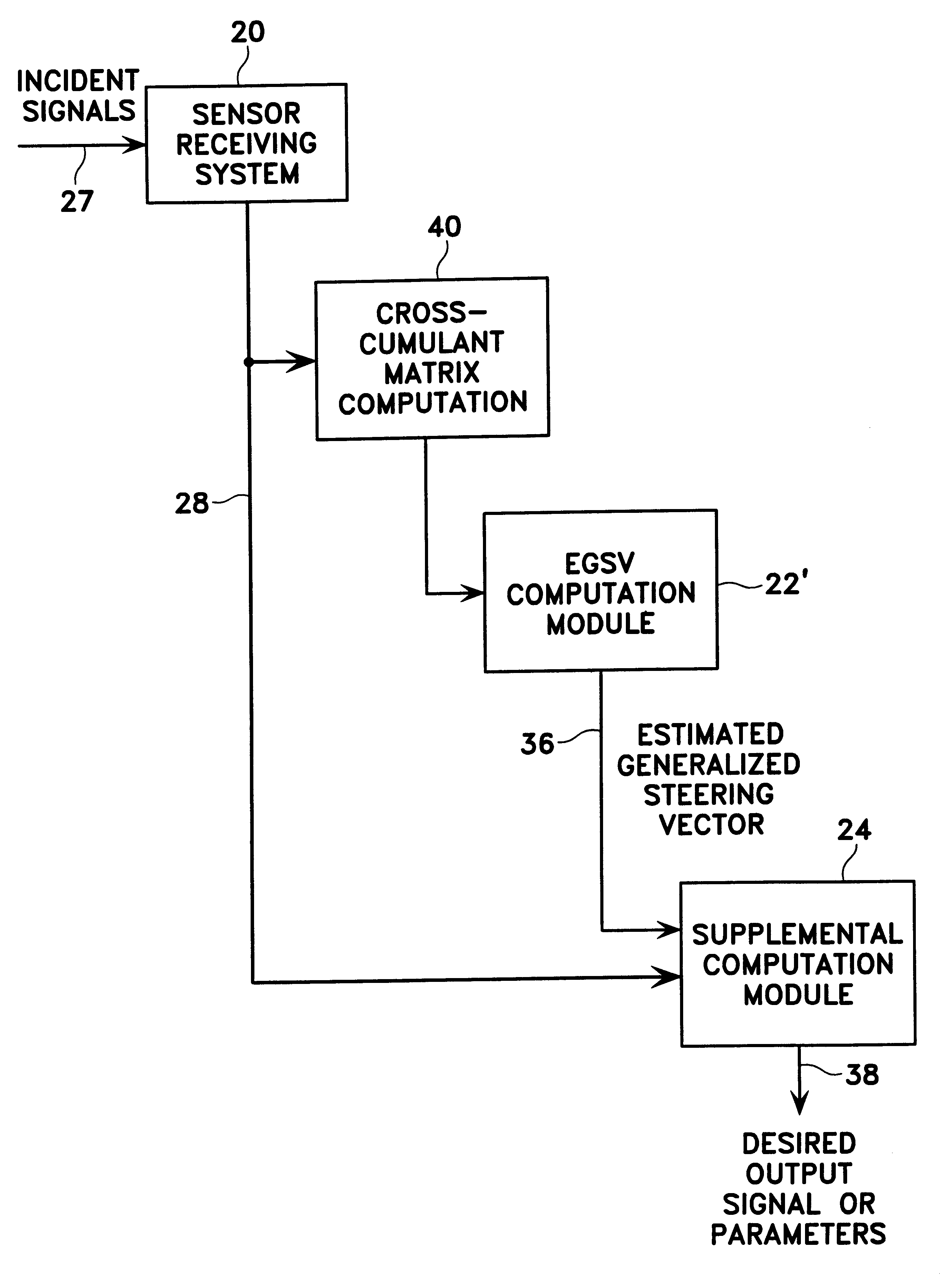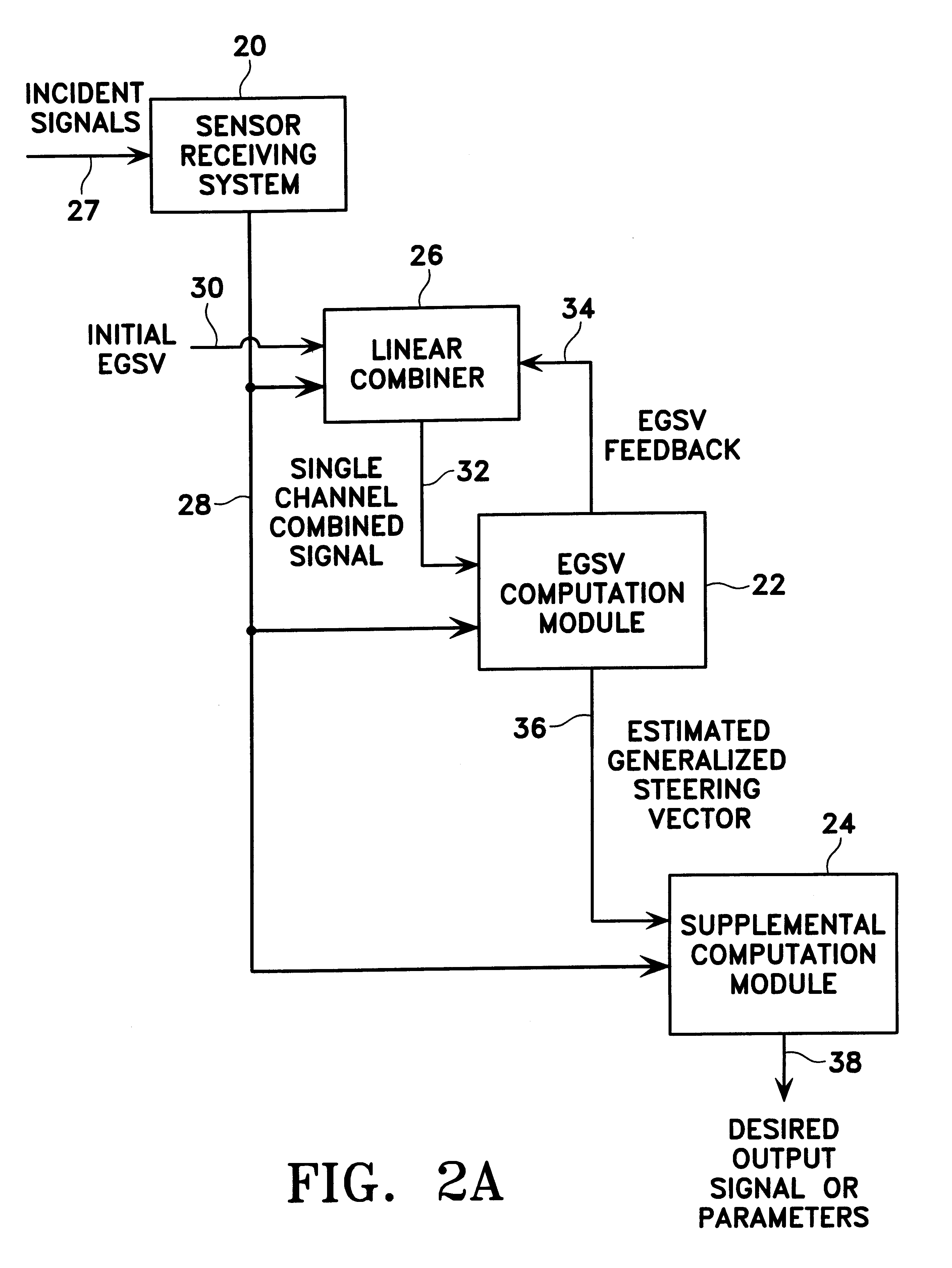Method for processing radio signals that are subject to unwanted change during propagation
a radio signal and propagation field technology, applied in the direction of multi-channel direction-finding systems using radio waves, instruments, polarised antenna unit combinations, etc., can solve the problems of inability to distinguish between two or more received signals at the same frequency, inability to apply constant modulus algorithms with limited success, and inability to rapidly reduce the accuracy of constant modulus algorithms
- Summary
- Abstract
- Description
- Claims
- Application Information
AI Technical Summary
Benefits of technology
Problems solved by technology
Method used
Image
Examples
Embodiment Construction
1.0 Introduction
Because the present invention encompasses a number of different but related concepts and applications, and because the key signal processing concepts of the invention can be implemented in several different embodiments, this detailed description is divided into sections and subsections, each of which covers a different inventive concept, specific embodiment, or practical application of the invention. The following is a table of contents of this description of the preferred embodiments:
1.0 Introduction
2.0 Overview of the Concept of the Invention
2.1 Signal Separation Concept
2.2 Signal Separation Concept in the Multipath Environment
2.3 Direction Finding Concept
2.5 Transmitter / Receiver Concept
2.6 Concept of Separation of Signals in a "Waveguide"
3.0 Preferred Embodiment Using EigenCumulant Recovery (eCURE) System
3.1 Overview and System Hardware
3.2 Preprocessing
3.3 Operation of an Active Signal Extraction Port
3.4 The Signal Recovery Controller
3.5 The Orthogonalizer
3.6 Oper...
PUM
 Login to View More
Login to View More Abstract
Description
Claims
Application Information
 Login to View More
Login to View More - R&D
- Intellectual Property
- Life Sciences
- Materials
- Tech Scout
- Unparalleled Data Quality
- Higher Quality Content
- 60% Fewer Hallucinations
Browse by: Latest US Patents, China's latest patents, Technical Efficacy Thesaurus, Application Domain, Technology Topic, Popular Technical Reports.
© 2025 PatSnap. All rights reserved.Legal|Privacy policy|Modern Slavery Act Transparency Statement|Sitemap|About US| Contact US: help@patsnap.com



